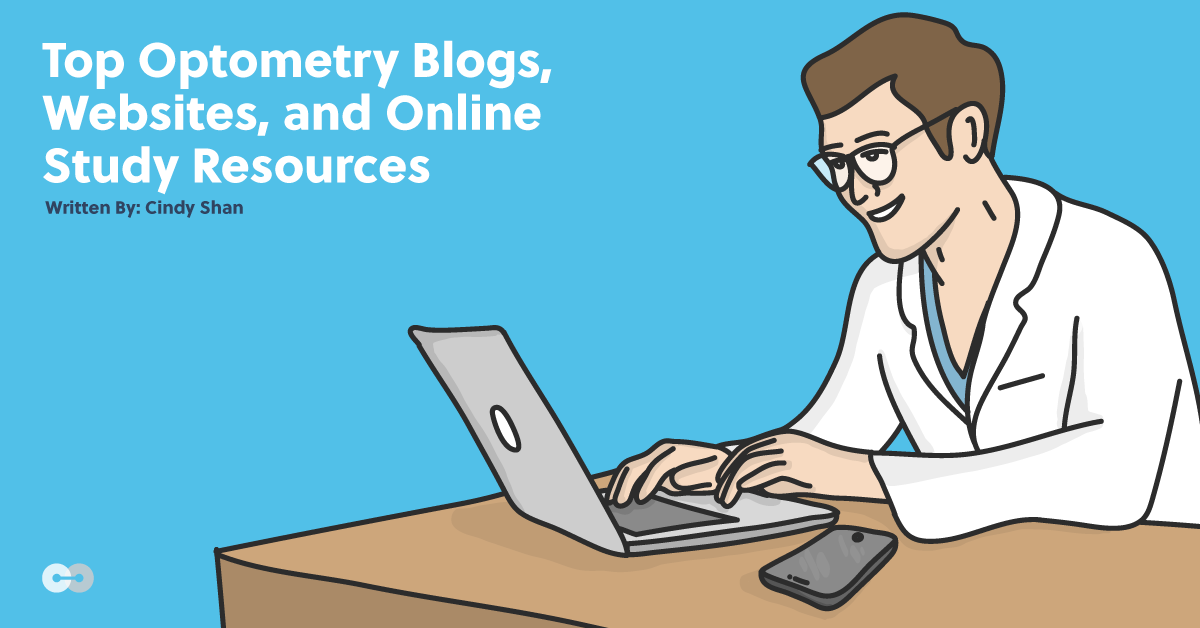As optometrists, it is important for us to stay up to date on the newest information in clinical techniques, patient care and practice management. Industry publications are still one of the top ways that optometrists stay informed about developments in eyecare, but as more and more ODs find ways to grow their careers and expertise, there are new blogs and websites sharing tips for growing your skills and knowledge. Whether you’re an auditory learner, a visual learner, or just like seeing what your colleagues are up to, there are so many ways to stay informed. Here are some of the top blogs and websites that can help you along your optometry career path.
Top optometry blogs:
Defocus Media was founded by two optometrists and social media entrepreneurs. The website is a platform for students and doctors to share their perspective on popular optometry-themed topics in this digital world in the form of both blog posts and podcasts. Popular Defocus Media podcasts include Lunch Date with Rachel and Kate (hosted by two recent grads from USML), and Optoturban (hosted by Dr. Jasdeep Singh Soni, a recent grad from Arizona College of Optometry).
Sponsored by the American Optometric Association (AOA), this website publishes articles, news, videos, and clinical pearls. The best part is that the content is all created by optometry students for optometry students all over Canada and the USA.
Run by Khanh Ton, a third-year optometry student at the University of Houston, KTOPT is an amazing resource that provides a sneak peak into a day in the life of an optometry student! The website provides links to vlogs, fun tours of the student clinics and labs, as well as tips and tricks for getting into optometry school. Not only that, KTOPT promotes other aspects of a balanced school life by hosting guests to discuss topics such as testing anxiety and gap years.
Originally developed by husband-and-wife optometrists, Myopia Profile was designed to be the go-to platform for myopia management practices. It features articles and blog posts about patient communication and the latest research in the topic. They provide infographics and brochures for the office as well. A button at the top corner leads to mykidsvision.org, a resource where parents can learn about myopia control on their own.
Practice your techniques
Need more practice with GP lens fits and the NaFl patterns? The GP Lens Institute (GPLI) provides a “Click N’ Fit” program that allows you to see different NaFl patterns on a test patient’s eye. They start with the case presentation and parameters and allow you to work through the case to select the correct lens. They will not only show you what a perfect fit pattern looks like but also a fit that is too steep/ flat by 0.50D steps. They also show you the NaFl patterns for lenses that may be too big/ small in diameter for the patient.
This online simulator allows you to see what the streak pattern would be like in various patients. You can cover up the patient information and attempt retinoscopy on the simulator (using your cursor to control the retinoscopy beam) and test your accuracy. This program is good for students that are just starting their optometry journey OR those that want a refresher on retinoscopy.
Online learning:
A service of the University of Iowa, Eyerounds.org is a bank of ophthalmology cases and photographs intended for students, residents, and physicians. Many of the cases were presented at Grand Rounds at the university. The site contains case presentations for a variety of conditions, tutorials for those conditions and clinical videos (i.e. surgical demonstrations).
Cindy’s Pick: Sarcoidosis Affecting the Lacrimal Gland
Dr. Tim Root is an ophthalmologist in Florida who creates videos and books tailored to medical and optometry students. He does an amazing job of breaking down complicated topics into easy-to-understand points and pairs it with useful visuals/ graphics in videos. He also provides slit lamp videos for various clinical findings we may see in practice.
This amazing site offers free recorded video streamed lectures/ discussions on popular topics such as dry eye, cornea and contact lens, and ocular emergencies. The project is also known as “Learning During Quarantine” and was created by Canadian eyecare providers to encourage exactly that, learning during quarantine. The lectures are interactive and speakers vary from recent graduates to ophthalmologist panels. They even provide lectures focused on the best ways to practice amidst the quarantine and provide case examples for how doctors have dealt with switching over to telemedicine.
Cindy’s Pick: Session 2: Emergency Eyecare and Low Vision.
There you have it! Some helpful websites and blogs to help you along your optometry journey. Remember, these resources are available to you regardless of which stage of your career you’re in. If you’re past your first years of practice, you can still go back and review GP lens fits and retinoscopy. If you want to get a sneak peak into ocular disease, check out the case studies! Whether it’s videos, blog posts or journal articles, use whatever outlet suits your learning style!
What are your favorite blogs and resources? Let us know in the comments!
